Want to find approx date of manufacture and value.
You can see where Hawken Guns got their influence from.
Thanks for any help.
German Jaeger (Hunter's) Rifle
Made by CHRISTOPH FUNK in Suhl, Germany.
He started the business in 1835. By 1945 it was just about gone. Totally gone by 1965.
They were known for making fine hunting rifles and two or three barrel rifle-rifle and rifle-shotgun firearms.
Only 2,229 units were manufactured between 1924 and 1942
Backlock action percussion cap lock with mechanical external hammer block safety.
Double set trigger.
Swamped barrel (i.e. middle part of barrel is narrower than breech or muzzle)
Patent or Hooked Breech.
Also, an interesting feature of the patent breech is that there is a steel stud or pin that extends from the rearmost part of the breech, inside the barrel, into the chamber where the powder would be.
It is about an inch long. Maybe 1/4in dia. I have never seen or heard of this before.
Barrel is rifled at approximately .52 caliber. 29" long. 1" across flats at muzzle.
Flat "shotgun" style butt.
Patchbox
Adjustable rear sight and what looks like provisions for a peep sight at backstrap.
This rifle was brought back as a "souvenir" of WWII when all weapons were confiscated from civilians.
That is why there is a repaired cut to the upper part of the full length stock.
The stock had to be shortened to fit in a duffel bag or trunk for the trip home.
Was a gift from a family member that was in the 34th Division in Europe in WWII.
This was my first ML rifle that got me started in early 1970's. Not fired since then when I got a T/C Hawken.
Target pics:
Turkey Head: One shot offhand 50yds. Won turkey for Thanksgiving
Bullseye: 10 shot from sandbag rest at 50yds.
Gun was finicky shooter hence the T/C.
On the three exposed flats of the octagonal barrel, midway between the rear sight and breech are three inscriptions.
GUSSSTAHL (engraved) (translation = cast steel)
CHRISTOPH FUNK IN SUHL (engraved and gold filled) (the maker in the city of Suhl, Germany)
ENGLISHER (engraved) (translation = English model or style)
Serial Number stamped on Buttplate = 13523

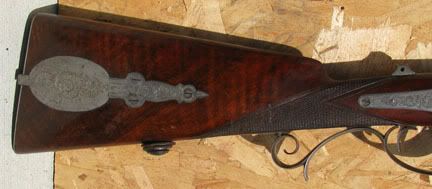
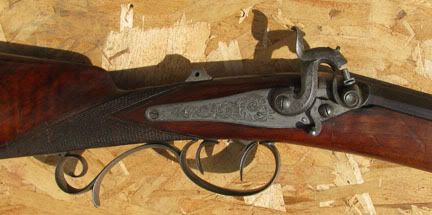

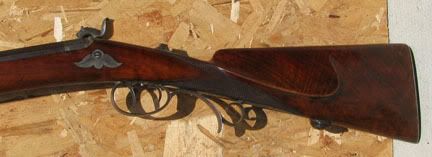
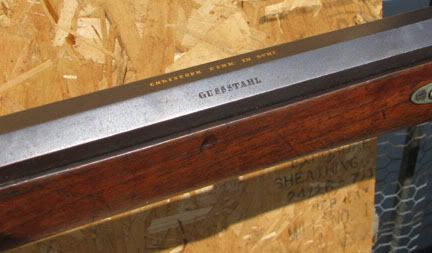
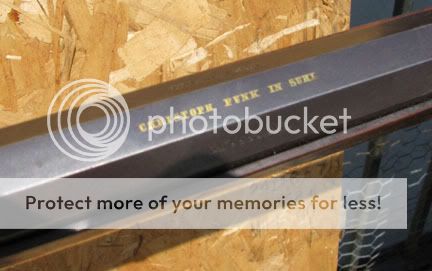
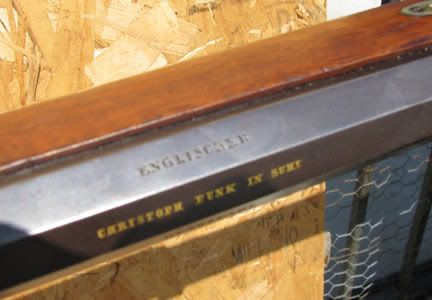

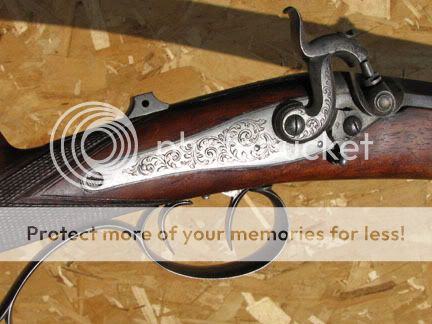
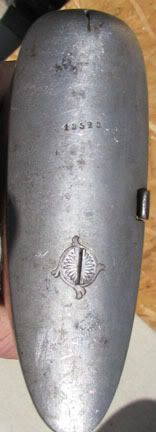
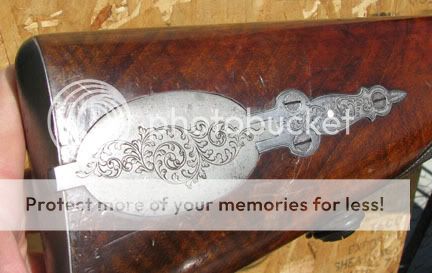



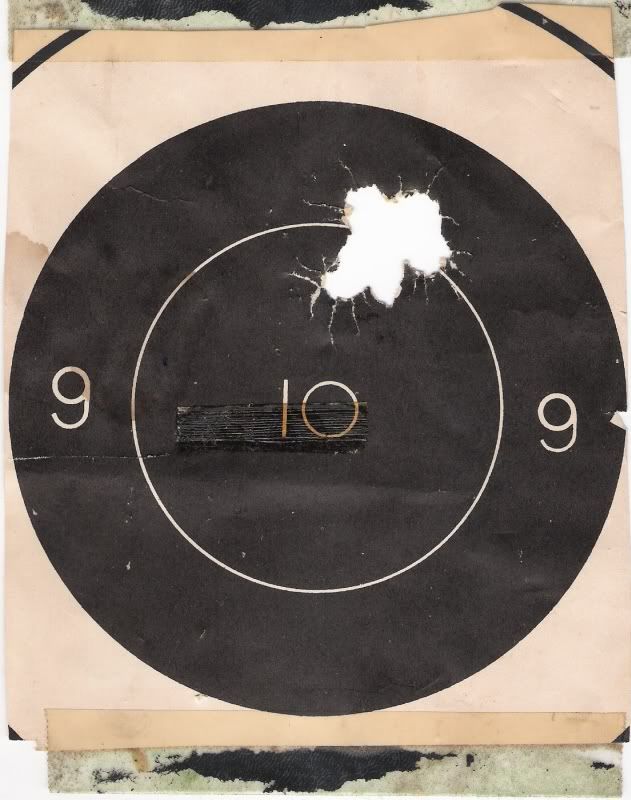
You can see where Hawken Guns got their influence from.
Thanks for any help.
German Jaeger (Hunter's) Rifle
Made by CHRISTOPH FUNK in Suhl, Germany.
He started the business in 1835. By 1945 it was just about gone. Totally gone by 1965.
They were known for making fine hunting rifles and two or three barrel rifle-rifle and rifle-shotgun firearms.
Only 2,229 units were manufactured between 1924 and 1942
Backlock action percussion cap lock with mechanical external hammer block safety.
Double set trigger.
Swamped barrel (i.e. middle part of barrel is narrower than breech or muzzle)
Patent or Hooked Breech.
Also, an interesting feature of the patent breech is that there is a steel stud or pin that extends from the rearmost part of the breech, inside the barrel, into the chamber where the powder would be.
It is about an inch long. Maybe 1/4in dia. I have never seen or heard of this before.
Barrel is rifled at approximately .52 caliber. 29" long. 1" across flats at muzzle.
Flat "shotgun" style butt.
Patchbox
Adjustable rear sight and what looks like provisions for a peep sight at backstrap.
This rifle was brought back as a "souvenir" of WWII when all weapons were confiscated from civilians.
That is why there is a repaired cut to the upper part of the full length stock.
The stock had to be shortened to fit in a duffel bag or trunk for the trip home.
Was a gift from a family member that was in the 34th Division in Europe in WWII.
This was my first ML rifle that got me started in early 1970's. Not fired since then when I got a T/C Hawken.
Target pics:
Turkey Head: One shot offhand 50yds. Won turkey for Thanksgiving
Bullseye: 10 shot from sandbag rest at 50yds.
Gun was finicky shooter hence the T/C.
On the three exposed flats of the octagonal barrel, midway between the rear sight and breech are three inscriptions.
GUSSSTAHL (engraved) (translation = cast steel)
CHRISTOPH FUNK IN SUHL (engraved and gold filled) (the maker in the city of Suhl, Germany)
ENGLISHER (engraved) (translation = English model or style)
Serial Number stamped on Buttplate = 13523




















